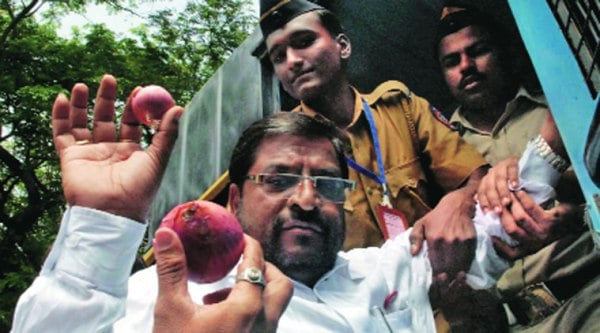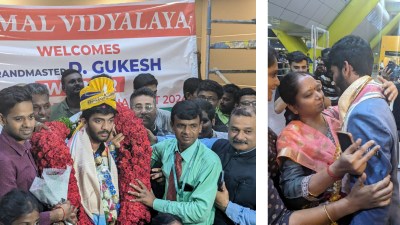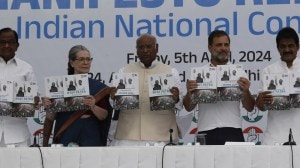- India
- International
The allies carrying Sena-BJP hopes on Pawars’ western turf
Raju Shetti and Mahadev Jankar showed potential in LS polls, are demanding chunk of assembly seats
 Raju Shetti: Defeated NCP senior Nivedita Mane by 1.5 lakh votes in Hatkanangle
Raju Shetti: Defeated NCP senior Nivedita Mane by 1.5 lakh votes in Hatkanangle
One seized a Lok Sabha constituency from the NCP in the heart of Sharad Pawar’s western Maharashtra bastion in 2009, then defended it convincingly this year. Another challenged Pawar’s daughter Supriya Sule in Pawar’s own Baramati, and polled 4.51 lakh votes to her 5.21 lakh, reducing her winning margin from 2.5 lakh votes to under 70,000.
It’s little wonder that Raju Shetti and Mahadev Jankar will play a key role in the Shiv Sena-BJP alliance as Pawar baiters in western Maharashtra. Their parties, Shetti’s Swabhimani Paksha and Jankar’s Rashtriya Samaj Paksha, may together contest barely a dozen seats, but the Sena-BJP expects them to give the NCP a run for its money in its bastion.
“I want to end the Sharad Pawar pattern of politics,” declares Jankar. “People are donating cash and in kind, somebody wants to help with a party office, somebody else wants to help with a rented helicopter. The truth is that people have seen through the Pawars’ duplicity.
They use the name of Shahu-Phule-Ambedkar, but people of communities such as the Dhangars and Malis have not progressed at all.” He says members of these communities often make it to the post of vice-president and chairman of the sugar cooperatives that the Pawars control, but never rise beyond that. “The truth is that the Pawars are working for their own family members only.”
At 46, Jankar, who lives in a single room tenement in suburban Mumbai, where he says he does not so much as own a bed, says he will never marry; he wants to commit his life to serving people. “RSS members who worked with me during my Lok Sabha campaign were surprised how similar my political position is to that of Narendra Modi — no family, nobody to serve through my politics but the people,” he says.

It’s widely believed that if Jankar was to contest the assembly election, he could even unseat deputy chief minister Ajit Pawar in the latter’s home constituency. But Jankar says he expects to go to the Rajya Sabha within 18 months if a Sena-BJP government assumes office in Maharashtra.
Shetti, 47, is equally ambitious, riding high on a very convincing win from Hatkanangle. He overcame a vicious campaign by the NCP-Congress to win by a massive margin of over 1.5 lakh votes from a seat that was with the NCP until 2009, when he unseated senior leader Nivedita Mane.
Shetti is seeking to establish himself as the new regional satrap in the sugar belt, ambitiously demanding, for his party men, 10 to 13 key seats in Kolhapur, Solapur, Sangli, Sangli and Ahmednagar districts.
Shetty’s political career started in 2001 when, despite a strong contest from mainstream parties and an established sugar lobby, he was elected a member of the Kolhapur Zilla Parishad. In 2004, he fought the assembly polls as an Independent from Shirol and won, defeating sugar barons S R Patil and Rajni Magdum. In 2009, he defeated two-time MP Mane for the first time in Hatkanangle, by 95,000 votes.
This year, Sharad Pawar put minister Jayant Patil, a key NCP leader from western Maharashtra, in charge of the campaign in Hatkanangale. It was simply not enough to stop Shetti.
“They used all kinds of tactics. For instance, if a sugar factory worker was seen at my rally, he was immediately sacked. They stooped very low, but the farmers stood by me,” says Shetti.
Apart from Shetti and Jankar, the Sena-BJP alliance will also use former NCP legislator Vinayak Mete in its western campaign. Mete, who switched loyalties just ahead of the general elections and heads the Shiv Sangram, derives his strength from the young militant Maratha cadre in the forefront of agitations for reservation. His influence is limited to emotive issues relating to the community and he does not have a mass base of his own. He is unlikely to get more than one seat to contest.
Mete tells The Indian Express, “The government’s decision okaying reservation for Marathas was solely because of Shiv Sangram’s agitation.” At one point, there were 19 smaller local groups under various names joining hands with Mete. Gradually, however, differences arose that dented the strength of his Shiv Sangram.
Fan base
“For years, we used to get peanuts. It is because of Shetti’s aggressive agitations that wealthy sugarcane factory owners came to their knees and started giving us Rs 2,500 per quintal,” says Bapu Kharat, 60, of Kharatwadi village of Islampur taluka, Sangli district. The entire village reportedly voted for Shetti.
Jankar’s demand for reservation for the Dhangar community has found wide resonance in constituencies where the community boasts large numbers. Overall, the community, currently classified as a nomadic tribe, is about 1.5 crore strong in the state. There are perhaps a dozen assembly seats where they account for as many as 70,000 votes, enough to swing an election.
Shetti’s leadership of sugarcane labourers and small farmers through the Swabhimani Shetkari Sanghatana earned him a loyal following over the years since he joined Sharad Joshi’s Shetkari Sanghatna in the 1980s.
The two could get fewer seats than they are demanding, especially amid the Sena-BJP tussle. But their influence could work much farther than the handful of seats they will contest.
DISMISSAL
Supriya Sule says, “What is the single contribution to society from these leaders? Have they offered some solution to chronic problems in the agragrian sector? Have they formed one sugar factory cooperative and run it well? Have they offered any ideas on best practices in the sector, any research?… Only agitating on price (of a farm commodity) does not make you a leader.”
(With inputs from Kavitha Iyer)
Apr 25: Latest News
- 01
- 02
- 03
- 04
- 05








































